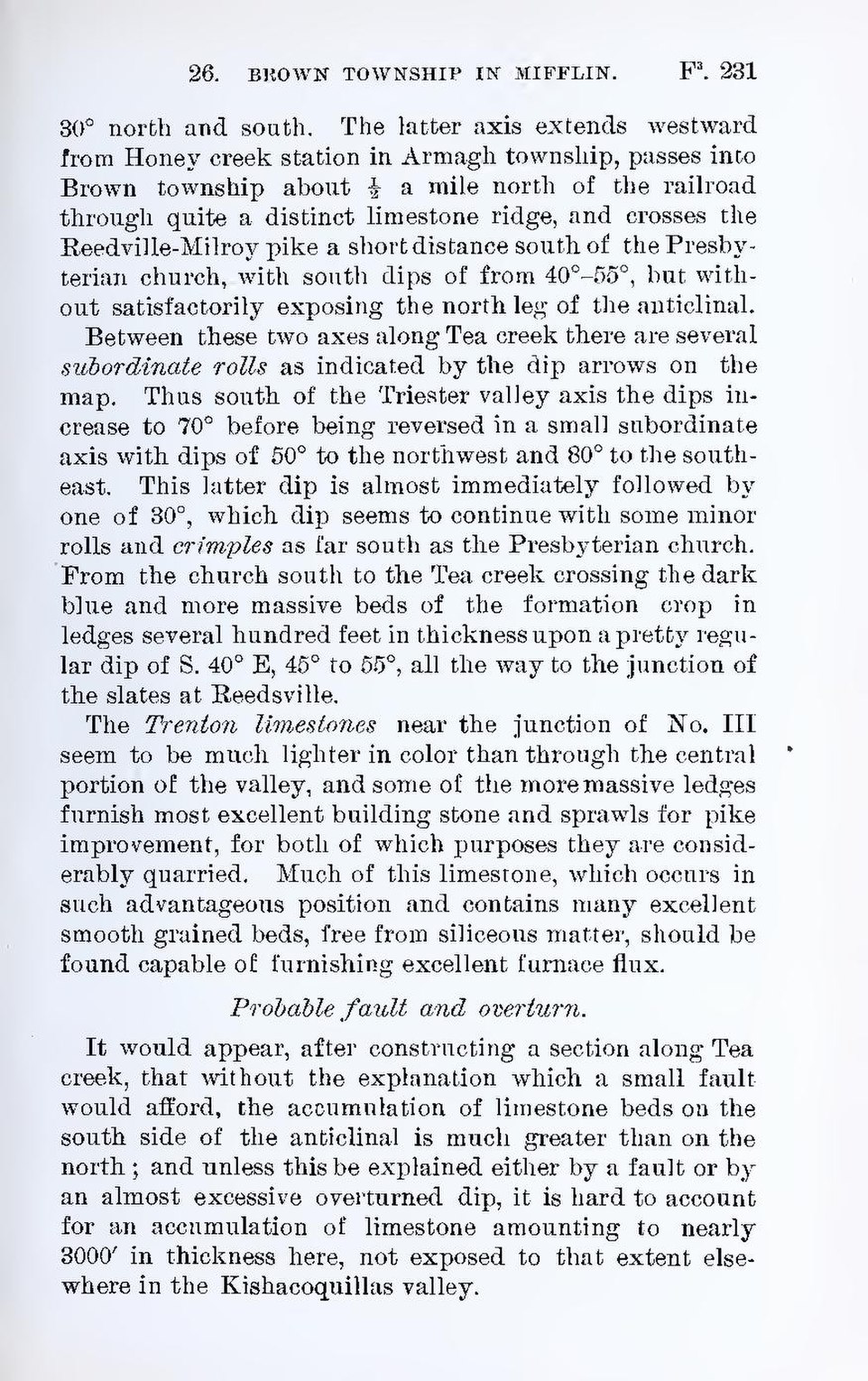30° north and south. The latter axis extends westward from Honey creek station in Armagh township, passes into Brown township about ½ a mile north of the railroad through quite a distinct limestone ridge, and crosses the Reedville-Milroy pike a short distance south of the Presbyterian church, with south dips of from 40°–55°, but without satisfactorily exposing the north leg of the anticlinal.
Between these two axes along Tea creek there are several subordinate rolls as indicated by the dip arrows on the map. Thus south of the Triester valley axis the dips increase to 70° before being reversed in a small subordinate axis with dips of 50° to the northwest and 80° to the southeast. This latter dip is almost immediately followed by one of 30°, which dip seems to continue with some minor rolls and crimples as far south as the Presbyterian church. From the church south to the Tea creek crossing the dark blue and more massive beds of the formation crop in ledges several hundred feet in thickness upon a pretty regular dip of S. 40° E, 45° to 55°, all the way to the junction of the slates at Reedsville.
The Trenton limestones near the junction of No. III seem to be much lighter in color than through the central portion of the valley, and some of the more massive ledges furnish most excellent building stone and sprawls for pike improvement, for both of which purposes they are considerably quarried. Much of this limestone, which occurs in such advantageous position and contains many excellent smooth grained beds, free from siliceous matter, should be found capable of furnishing excellent furnace flux.
Probable fault and overturn.
It would appear, after constructing a section along Tea creek, that without the explanation which a small fault would afford, the accumulation of limestone beds on the south side of the anticlinal is much greater than on the north; and unless this be explained either by a fault or by an almost excessive overturned dip, it is hard to account for an accumulation of limestone amounting to nearly 3000′ in thickness here, not exposed to that extent elsewhere in the Kishacoquillas valley.
